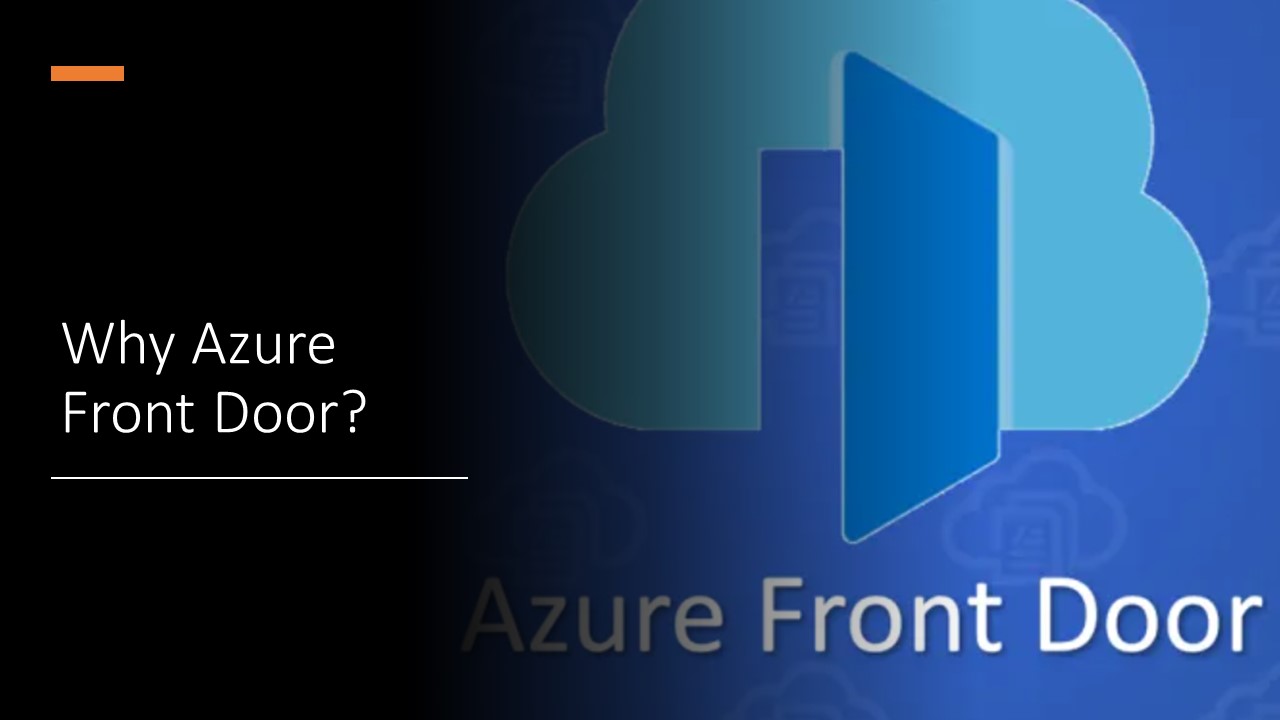There are many things which Azure offers similar to Azure Front Door. Let’s see first what are those.
Azure Load Balancer
With built-in load balancing for cloud services and virtual machines, you can create highly-available and scalable applications in minutes. Azure Load Balancer supports TCP/UDP-based protocols such as HTTP, HTTPS and SMTP, and protocols used for real-time voice and video messaging applications.
Application Gateway
Azure Application Gateway is a web traffic load balancer that enables you to manage traffic to your web applications. Traditional load balancers operate at the transport layer (OSI layer 4 – TCP and UDP) and route traffic based on source IP address and port, to a destination IP address and port.
Application Gateway can make routing decisions based on additional attributes of an HTTP request, for example URI path or host headers. For example, you can route traffic based on the incoming URL. So if /images is in the incoming URL, you can route traffic to a specific set of servers (known as a pool) configured for images. If /video is in the URL, that traffic is routed to another pool that’s optimized for videos.
This type of routing is known as application layer (OSI layer 7) load balancing. Azure Application Gateway can do URL-based routing and more.
Traffic Manager
Azure Traffic Manager is a DNS-based traffic load balancer that enables you to distribute traffic optimally to services across global Azure regions, while providing high availability and responsiveness. Traffic Manager is resilient to failure, including the failure of an entire Azure region.
Content Delivery Network (CDN):
Azure Content Delivery Network (CDN) is a global CDN solution for delivering high-bandwidth content. … With Azure CDN, you can cache static objects loaded from Azure Blob storage, a web application, or any publicly accessible web server, by using the closest point of presence (POP) server.
Microsoft decided that this wasn’t enough, in order that they have made Front Door for us.
Why Azure Front Door?
Microsoft developed front door 5 years ago to reinforce the performance of interactive services like Office 365 and Bing. Since then, this globally deployed service has been battle tested by millions, if not billions, of users. front door isn’t new – it’s newly available – making it an unusual “new” cloud service because it’s already mature.
What does it do? front door is an entry point into the Microsoft WAN that’s deployed in edge sites round the world. once you hook up with a service that front door is enhancing, you enter the Microsoft WAN through the closest (AnyCast) edge site and, from there, you hook up with the closest available (probe tested) instance or replica of the service via the Microsoft WAN.
Typically, once we deploy our web applications to Azure App Service or other clouds, the network flow of a user visiting your site is extremely simple , the user’s computer just sends the request on to your server and obtain the response, this may have some potential issues.
First, the access speed. for instance , my blog is deployed in South Asia, this makes users within the US visiting my site to possess much slower speed than users in India. For static resources, we’ve already added Azure CDN to enhance the performance, but CDN can’t solve everything. Static content delivery are going to be enhanced, but other interactive services will suffer from latency. Datacenters that physically near the end-user certainly have an enormous advantage in access speed. this is often one among Azure Front Door’s capability to automatically select the foremost nearby data center that runs your workload for the user.

Second, it’s about resilient. When your internet site goes boom during a data center, or the data center itself goes boom. Azure front door can detect the failure and automatically route your users to subsequent nearby data center within minutes. The user will only notice a slower access speed instead of see your website magnify ahead of the screen.

Front Door Services
It also offers additional services:
- URL redirection
- Session affinity
- SSL termination
- Security via customer WAF rules and DDoS protection
- URL rewrite
- IPv6 and HTTP/2 support
Pricing
Front Door is a consumption-based service, meaning that you pay for what you use.
Conclusion.
I have got no chance to deploy Azure Front Door Service, but this will be great for those whose website has an international presence. Performance is key to the success of any website. Which I think Azure try to resolve and other is Security which has taken care here. We will see further what is the difference between Azure Front Door Vs Traffic Manager vs Application Gateway.
—


